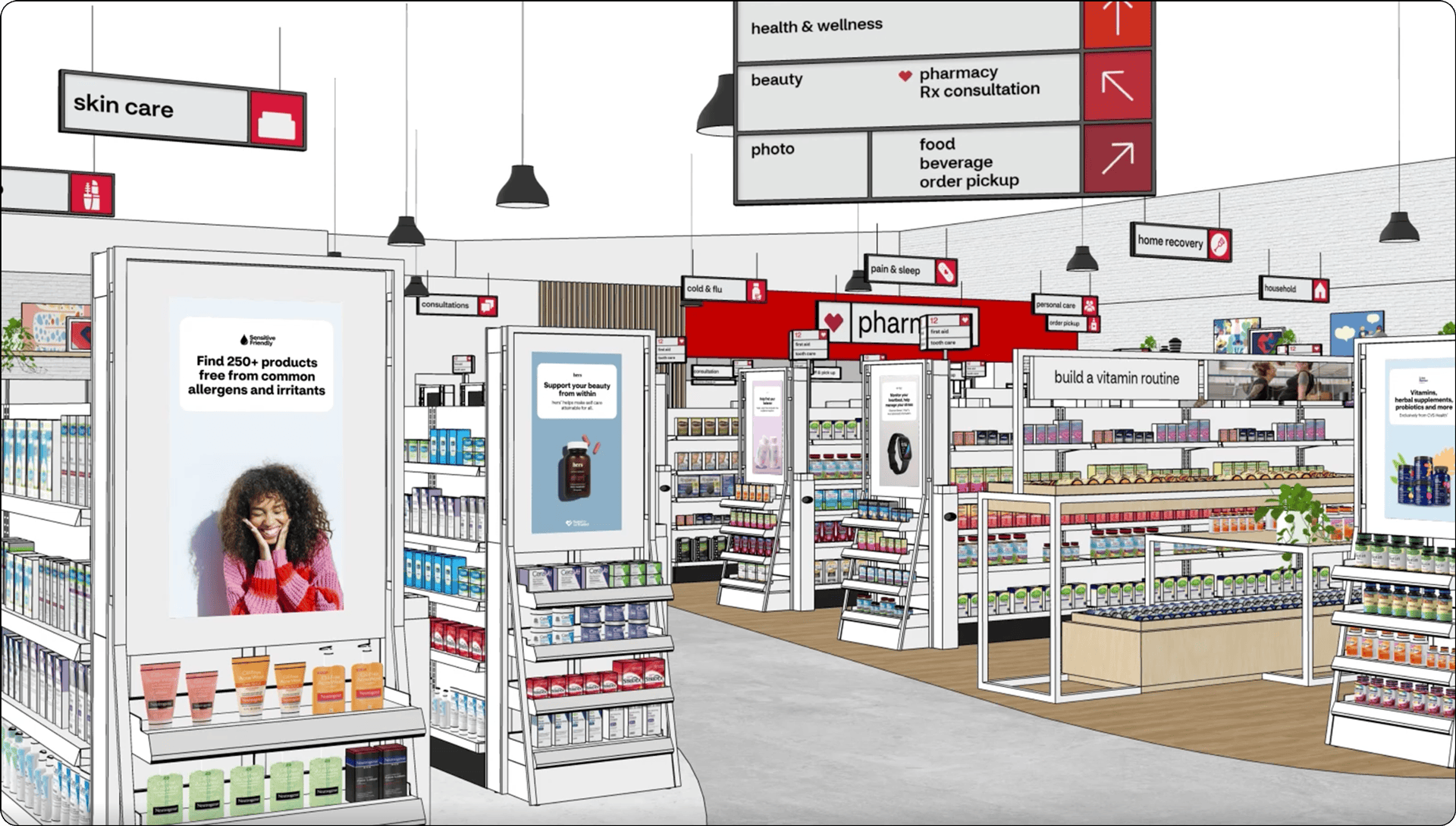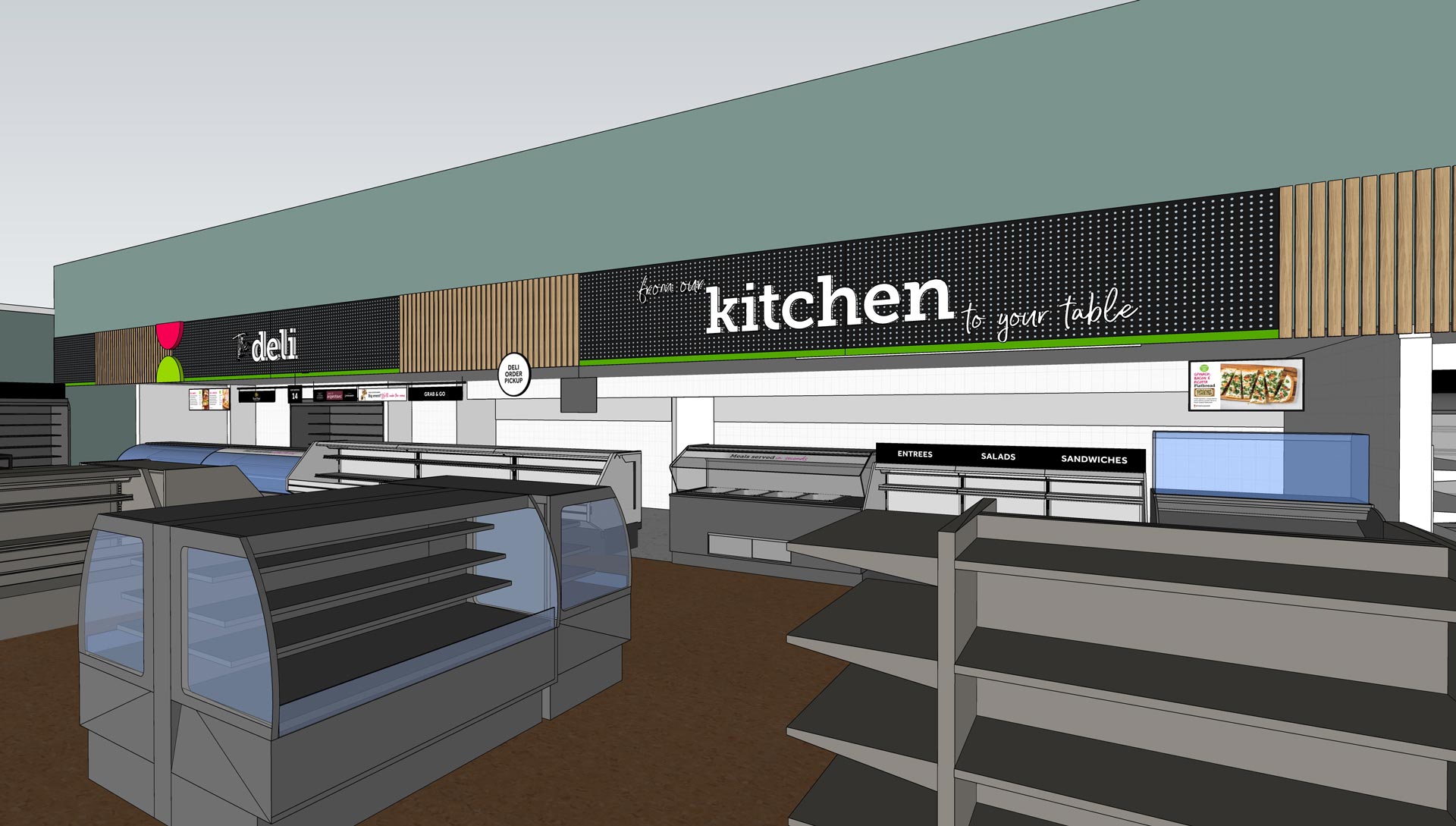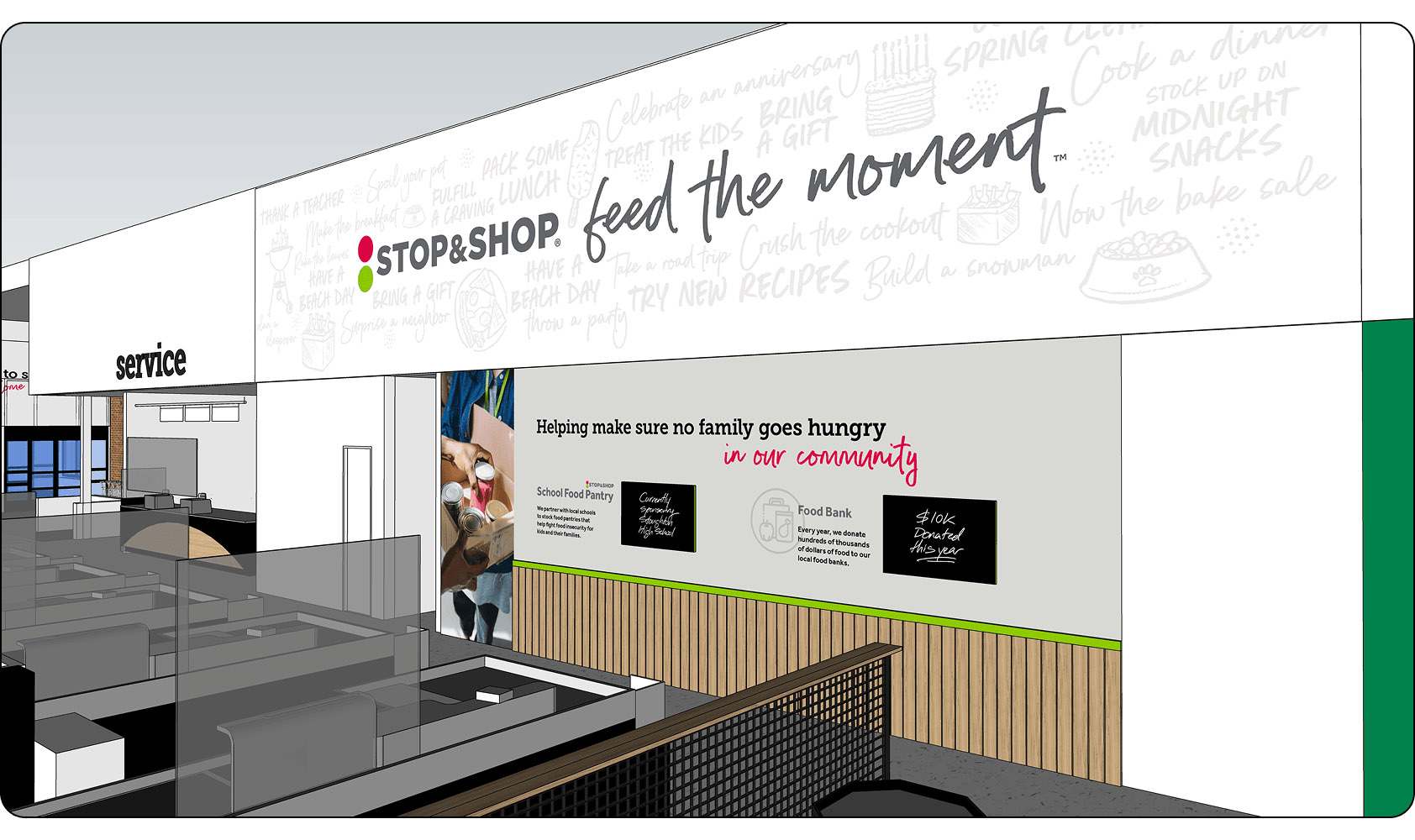Expertise

Design that drives experience
Experiential design connects customers to brands in ways that feel intuitive, emotional and immersive. It’s not just about making spaces look good, it’s about making them work harder for the brand and better for the shopper.
We’ve been designing experiences to help keep brands healthy and people happy for more than 35 years. We’ve partnered with retail leaders like CVS Health and Stop & Shop to simplify customer journeys, inspire action and drive sales. Whether it’s shaping environments or guiding customer behavior, we use strategy + creative to design spaces that do more than sell.
Here are five ways experiential design can transform a retail space and why it matters for marketing leaders aiming to drive growth, loyalty and innovation.

#1: Bringing the brand to life
Every retail space is an opportunity to embody your brand story. With environmental graphics, the right design can convey what you stand for and how you serve. For CVS Health, we developed an integrated signage system that simplified navigation and reinforced the brand. By reducing confusion and enhancing wayfinding, we helped customers feel confident in the brand’s ability to serve them competently. The system’s consistent, cohesive design conveyed professionalism and reliability, reinforcing CVS Health’s commitment to quality. Through visual alignment and thoughtful messaging, the signage communicated brand values at every touchpoint, fostering emotional engagement and a sense of care. Together, these elements strengthened customer trust and underscored CVS Health’s reputation as a dependable, customer-focused brand.

#2: Making retail feel local
Spaces that reflect the values, aesthetics and rhythms of the local community create deeper emotional connections. At Stop & Shop, our redesign of the store decor brought warmth and personality into every aisle, making each store feel more like a neighborhood staple rather than a chain. Through hyper-localized messaging and visual cues, we helped stores feel more welcoming and more relevant to their specific audiences.


#3: Wayfinding that drives sales
Great design encourages discovery. Our work with CVS Health revealed that when customers navigate a store easily, they spend more time exploring. That insight led to a signage approach that prioritized efficiency while subtly inviting shoppers to slow down and see more. From fast paths to featured zones, experiential wayfinding becomes a tool to increase both satisfaction and basket size.

#4: Making convenience feel intuitive
Scan It™, Stop & Shop’s handheld self-checkout tool, offered shoppers convenience, but lacked awareness and clarity on how to use it properly. We helped reimagine the program with a new visual identity and messaging platform that demystified the experience and encouraged adoption. By emphasizing benefits like budget control and a faster trip, we repositioned Scan It™ as a modern must-use for savvy shoppers. The in-store visit was mapped, redesigned and optimized for every user touchpoint, from the deli counter to self-checkout.

#5: Storytelling that reinforces community value
CVS Health stores do more than sell products, they serve communities. Our in-store content strategy helped tell that story visually and verbally, reminding customers that CVS supports their health, their families and their neighborhoods. We translated that message into a cohesive signage system that aligned with brand tone, supported diverse customer needs and scaled across locations. By putting storytelling at the heart of our design, we turned every visit into a brand-building experience.

The takeaway
Experiential design is a strategic tool that connects brand purpose to customer experience. For marketing leaders, it’s how space becomes story, and story drives sales. By designing environments that feel good and perform, spaces that express brand values and build community move people to act. Because when retail works harder, brands grow stronger — and customers keep coming back.














